Export
Export table data or query results — full tables or selections — and share as an interactive web page.
Learn how to export table data or query results. Export complete tables or selected ranges, and share results as an interactive web page when needed.
You can export:
- Table data: full table contents
- Selected ranges: specific rows or cells
- Query results: data returned by SQL queries
Start exports via right click (context menu) or from the Export / Share panel to the right of the results grid.
Interactive Web Page export example. Open in a new tab
Open a Table
Step 1: Connect to a database
Establish a connection in the DB Explorer pane.
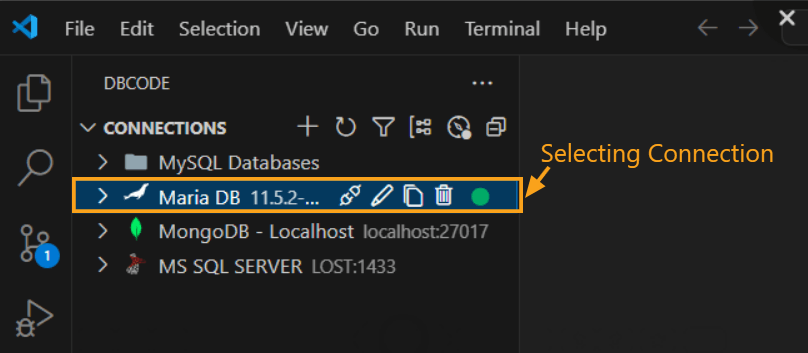
Step 2: Select a database
Choose the database you want to work with.
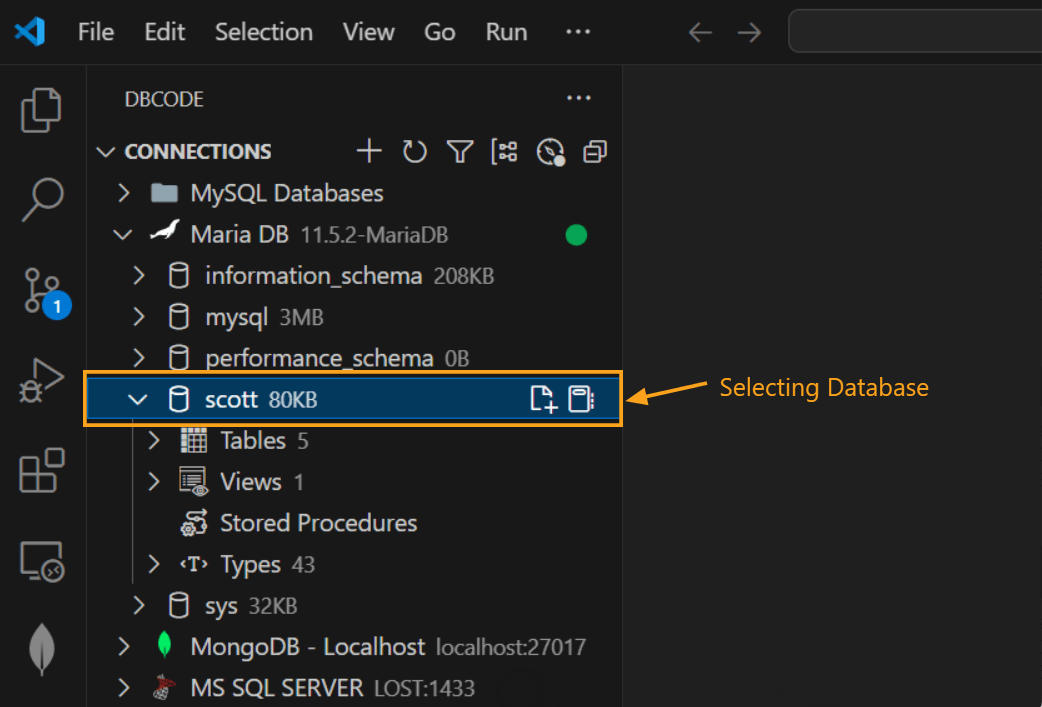
Step 3: Open a table
Expand Tables, then click the table you want. It opens in a new tab.
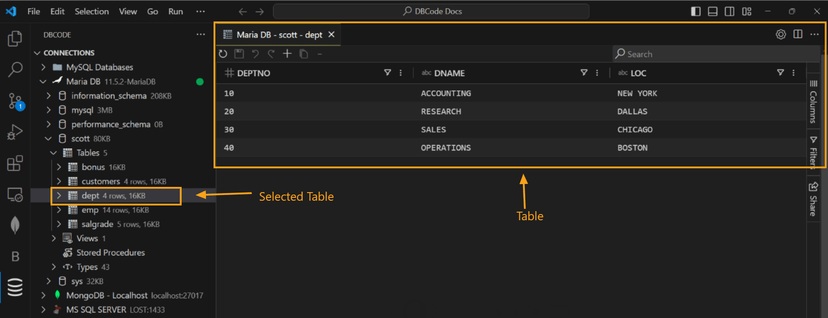
Export an Entire Table
- Open the export menu
Right click the table to open the context menu, then hover overExport.

- Choose
All
SelectAll, then choose your preferred format.
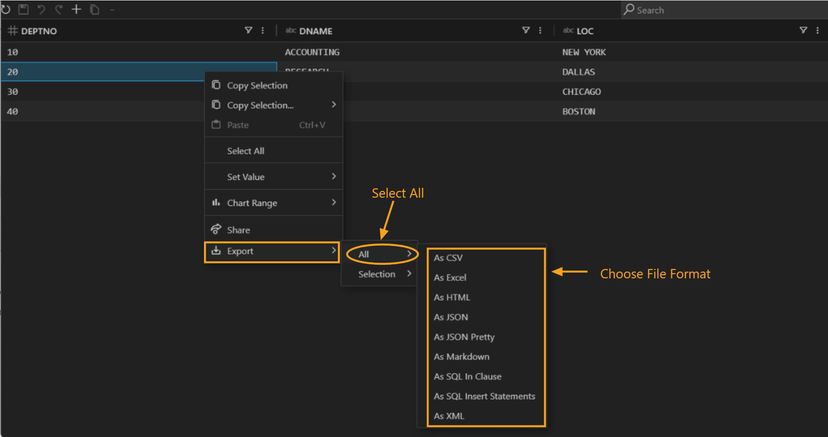
- Save
Pick a location, name the file, and click Save.

Export a Selected Range
- Select the range
Highlight the rows/cells you want, then right click and chooseExport.

- Choose
Selection
SelectSelection, then choose your preferred format.
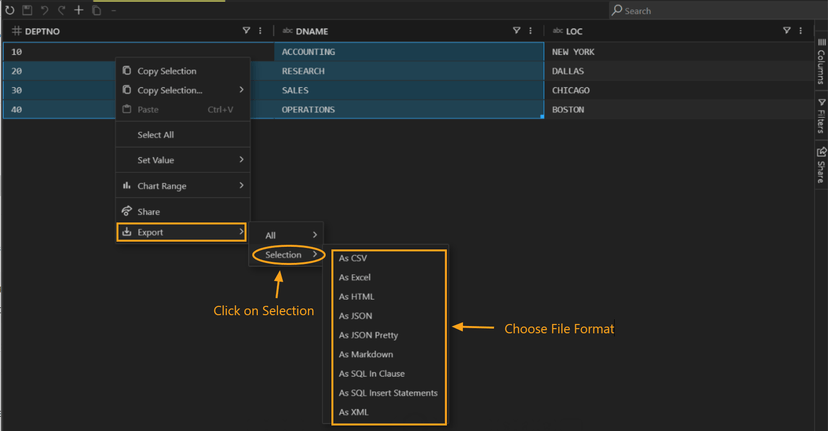
- Save
Specify a location, set a file name, and click Save.
Note: You can perform the same steps in the SQL results grid — right click inside the grid to export all rows or just your selection.
Note: To create an interactive web page export, choose the Web Page format from the Export menu or the Export / Share panel and configure options as needed.
Supported Export Formats
You can export table data in a range of formats, including:
- CSV (Comma-Separated Values)
- Excel (XLSX)
- HTML (Static table markup)
- Web Page (Interactive HTML; options to include SQL, export date/time, title, and password protection)
- JSON (JavaScript Object Notation)
- JSON Pretty (Formatted JSON for readability)
- Markdown (For documentation purposes)
- Parquet (Columnar storage format optimized for analytics workflows)
- SQL In Clause (SQL format for use in
INconditions) - SQL Insert Statements (SQL script for re-inserting data)
- XML (Extensible Markup Language)
These formats are available for both full table exports and selected data ranges, offering flexibility based on your requirements.
